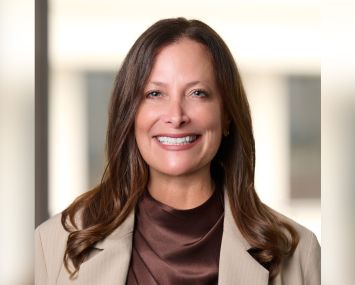Presented By: HALL Structured Finance
Private Lender Opens Door to C-PACE Financing, Giving Borrowers an Edge Over Traditional Banks
By HALL Structured Finance September 24, 2025 12:59 pm
reprints
In today’s evolving commercial real estate finance landscape, where borrowers face rising interest rates, tighter capital markets and increasing cost pressures, there is growing demand for innovative funding solutions. Against this backdrop, Dallas-based private lender Hall Structured Finance (HSF) stands out — not just by offering capital, but by providing smart, flexible capital solutions.
For over 30 years, HSF has provided debt capital to borrowers nationwide, with a focus on ground-up construction, asset repositioning and bridge loans. The company specializes in providing capital across the capital stack, including first-mortgage debt ranging from $15 million to $150 million, as well as mezzanine debt and preferred equity in the $10 million to $50 million range. HSF has primarily deployed capital in the hospitality and multifamily sectors, but recently announced its re-entry back into office lending. The company is actively seeking select office financing opportunities in Texas, specifically value-add and ground-up construction projects.
HSF is part of the larger HALL Group family of companies and, like HSF, is a nationally recognized real estate company specializing in development, ownership and management. As a result, HSF is uniquely positioned to understand and address the diverse needs of its borrowers.
“We’re not just lenders. … We understand what it takes and the challenges borrowers face in developing, owning and operating real estate,” said Donald Braun, president of HALL Structured Finance. “This differentiates us from the typical capital provider. We’re a resource for borrowers who want a lender that truly understands their project.”
Having closed transactions across multiple market cycles, HSF brings both perspective and strategic insight to the table.
“Challenges in the current environment, while different in some ways from previous cycles, are similar in the approach and solutions required. One key solution is to get creative with the capital stack,” Braun noted.
One way HSF is helping borrowers get creative is by incorporating commercial property assessed clean energy (C-PACE) financing into the capital stack. C-PACE allows property owners to fund a portion of development or refinance costs related to energy efficiency, renewable energy or resiliency improvements, either planned or recently completed.
“Most lenders are still getting familiar with C-PACE, and as a result are hesitant to incorporate it into their capital stacks,” Braun said. “While C-PACE financing acts as a form of senior debt, it often doesn’t increase the overall debt amount. We’ve partnered with C-PACE providers to create capital cost efficiencies for borrowers. This allows us to offer seamless, combined financing solutions that function almost like a one-stop shop.”
C-PACE offers fixed-rate, long-term financing — typically 25 to 30 years — enabling developers to lock in attractive rates while retaining the flexibility to refinance in the future. For developers facing an uncertain rate environment, C-PACE can be a key strategic advantage.
“This type of financing lets borrowers secure a portion of their capital stack at long-term, attractive rates, while maintaining prepayment flexibility,” Braun explained. “That’s a huge advantage in today’s uncertain rate environment. Additionally, when combined with our senior loans, the blended cost of capital becomes highly competitive. You gain rate stability for part of the capital stack but can still refinance the C-PACE portion at relatively low cost if rates improve.”
The biggest challenge in combining C-PACE with a senior loan? According to Braun, it’s “ensuring the senior lender understands C-PACE, is knowledgeable in the space, and has experience integrating it as part of the overall debt. That’s key.”
Unlike many traditional lenders, HSF is comfortable structuring and closing deals that incorporate C-PACE and collaborates with all major providers.
“Our role is to facilitate the integration of C-PACE into the capital stack,” Braun said. “We understand how to structure these deals efficiently and have done so on a number of deals we’ve closed, which is something many senior lenders still struggle with.”
Although C-PACE can be used across various asset classes, HSF finds it particularly well suited for hospitality and multifamily developments — both areas where the company already specializes.
“The nature of hospitality and multifamily projects often lends itself well to C-PACE allocations,” Braun noted. “We’ve also seen it used in office and industrial projects, though those typically see smaller proceeds.”
With economic uncertainty driving more complex capital stacks, HSF positions itself as a strategic partner.
“Not only are we working with borrowers to incorporate C-PACE into their capital stacks, but given the current environment, we’re also working on more opportunities involving mezzanine debt and preferred equity,” Braun said. “Capital structures with multiple parties and funding sources bring a level of complexity that require the right senior lender. HSF has always taken pride in offering flexible capital solutions to better serve and address the needs of developers and borrowers, a characteristic that is more important than ever given the current environment.”


